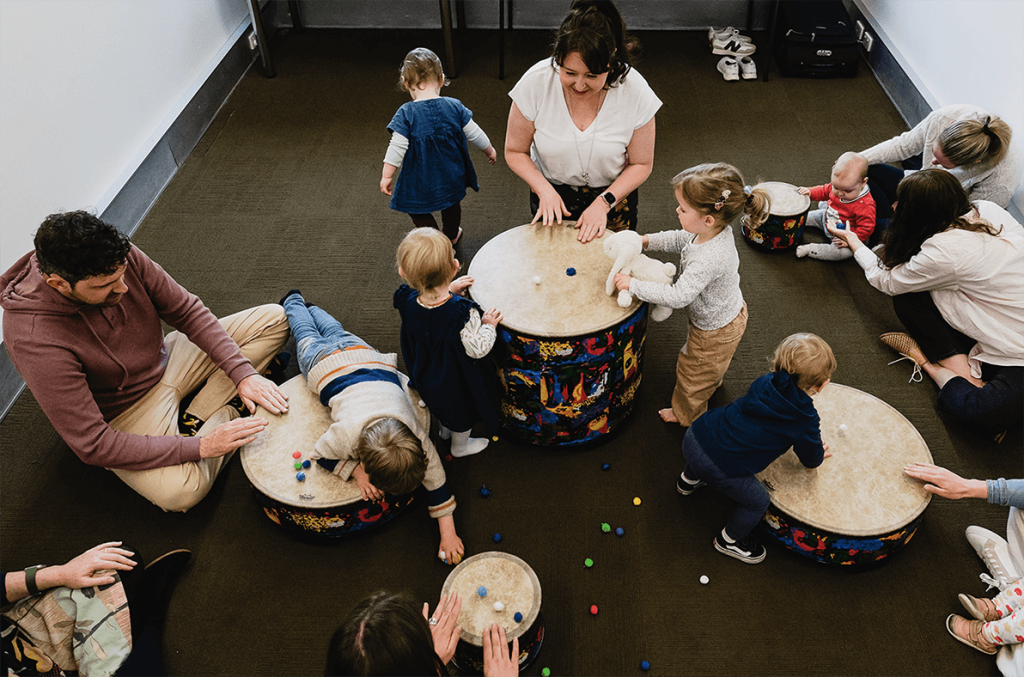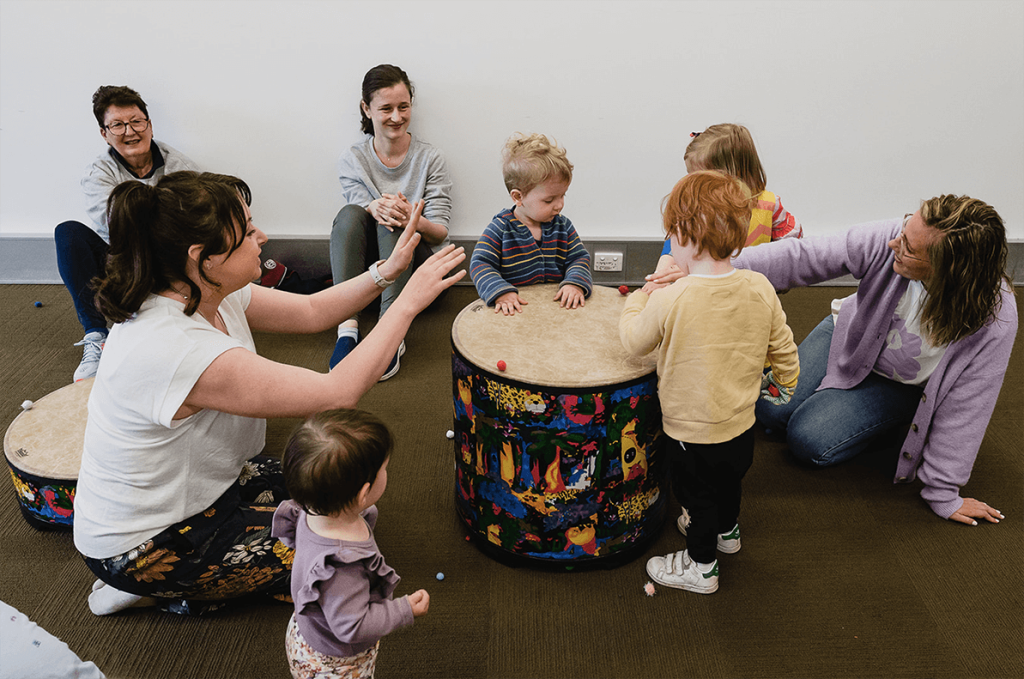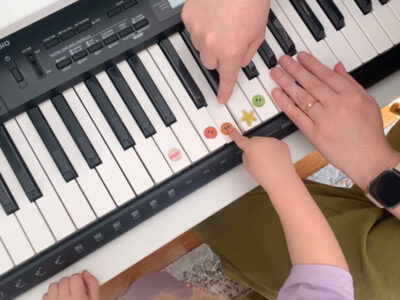Post by Louise Lindsay
The drum is my go-to instrument when it comes to accessibility.
Drums create an equal opportunity for all children in the realm of early years musical play. Irrespective of their age or skill level, almost every child can strike a drum, pan, or pot without any prior training or expertise. This simple form of play offers numerous long-lasting advantages.
Here are seven reasons to practice drumming with your child:

1. Creativity and Self-Expression
Drumming offers a thrilling and stimulating experience. Its encompassing rhythm, vibrations, and sounds can be pursued without any prior knowledge or expertise. By engaging in drumming, children are able to unleash their creativity and express themselves through improvisation and rhythm. They have the freedom to experiment with various beats and compose their own music, thereby enhancing their imagination and building confidence.
2. Connection and Cooperation
Engaging in group drumming can foster a feeling of social support by forging deeper, and more meaningful connections with others. In drumming with others children learn to cooperate, take turns and listen to others. This fosters social skills, teamwork, and a sense of belonging. When practiced at home, this sense of belonging and connection can lead to stronger family relationships.
3. Changes the brain
Drumming uses both signs of the brain. The significance of this in early education is that it assists in the formation of strong connections between the two sides of the developing brain by generating neuronal connections. Engaging in activities that stimulate the left and right hemispheres of the brain simultaneously has been associated with higher IQ.
4. Improves the immune system
Drumming is a whole-body experience. It elevates the heart rate and promotes blood circulation – this brings about a multitude of advantages such as alleviating tension, anxiety, and stress while also aiding in enhancing the immune system. Furthermore, it may help in the management of pain by triggering the release of endorphins.

5. Communication and language skills
There is a link between language, rhythm, beat, and the development of communication and language skills. Drumming can enhance auditory processing in children, as it promotes active listening which assists in the understanding of dynamics such as loud and soft sounds and the patterns in sound. This attuned attention to sound has been shown to make children more empathetic. Furthermore, not only do these benefits assist children in mastering their own language – but in the acquisition of additional languages too!
6. Confidence
The drum is an instrument that exudes confidence and demands attention! It offers a healthy form of expression and the endorphins that are released while playing can improve a child’s happiness. Research shows that the freedom to unleash one’s creativity on a drum has been associated with enhanced self-esteem and heightened confidence in everyday life.
7. Emotional Regulation
The act of drumming offers sensory stimulation by means of sound, vibrations, and the tactile sensation of striking the drum. This engagement with multiple senses improves your child’s sensory integration while also providing an outlet for them to release energy and frustration. Striking a drum serves as a healthy outlet for a child to regulate their emotions and foster their own emotional well-being.
So there you have it, seven compelling reasons to begin drumming with your child. If you desire a comprehensive playlist and drumming play inspiration, you can find lessons in our GM TV subscription. GM TV is an online music-making platform that is dedicated to fostering family connections and promoting learning through musical play.
Now, grab a drum or any object suitable for banging – even if it’s as simple as the kitchen table! Engage in play and relish the knowledge that this uninhibited and noisy play offers numerous advantages that will continue to benefit your children long after the music-making session concludes.
Follow Louise (@gumnut_music)





